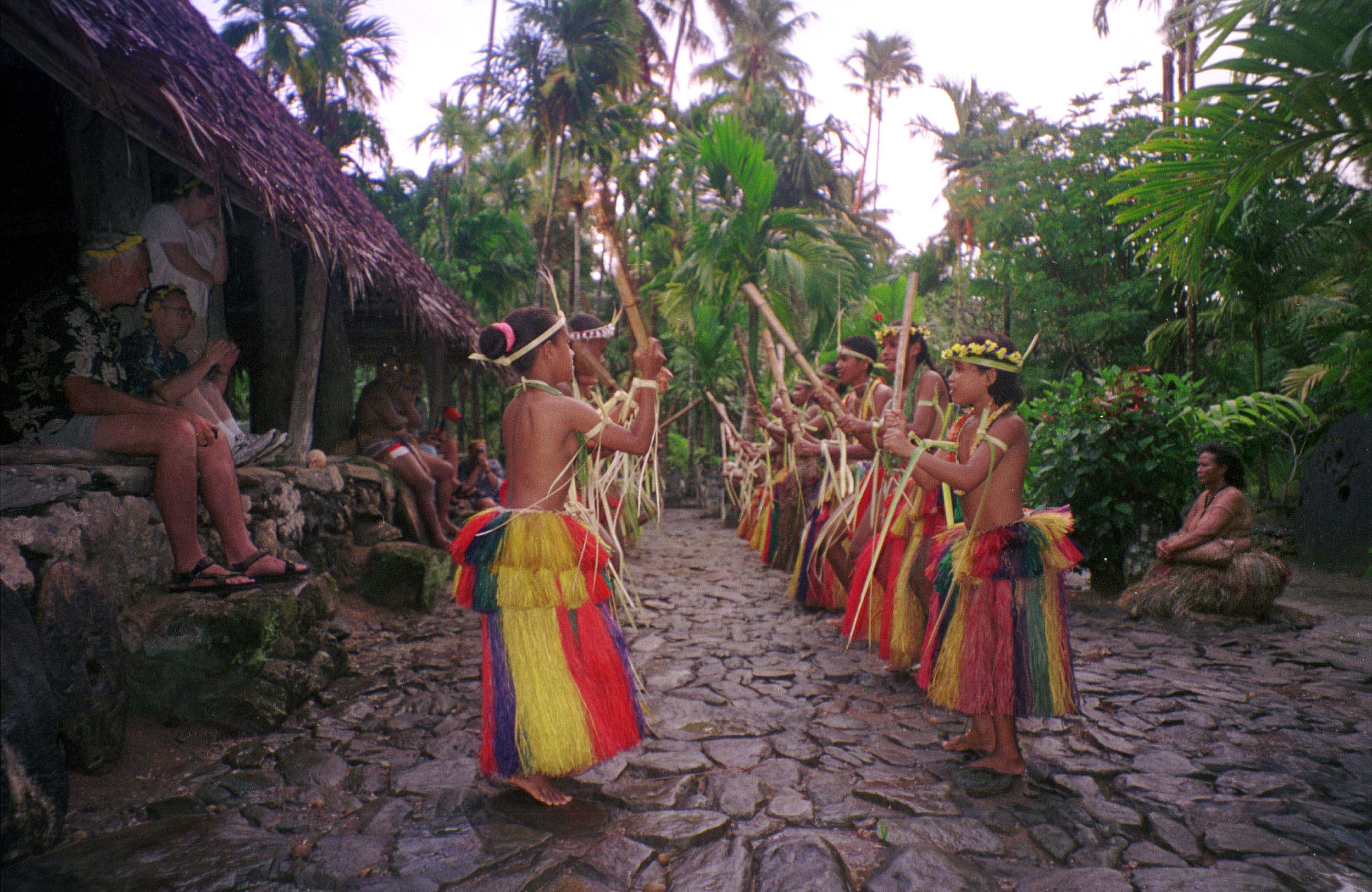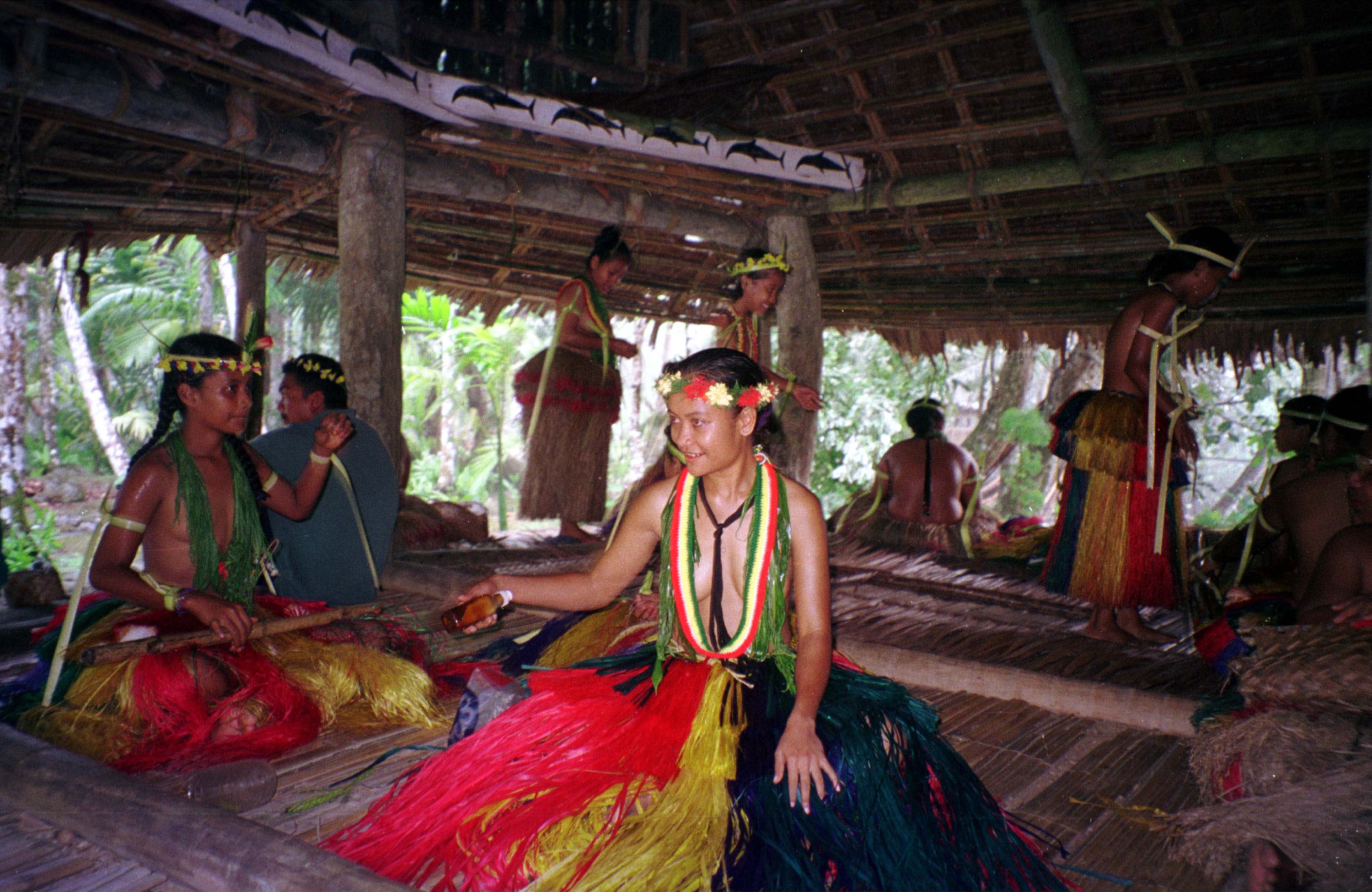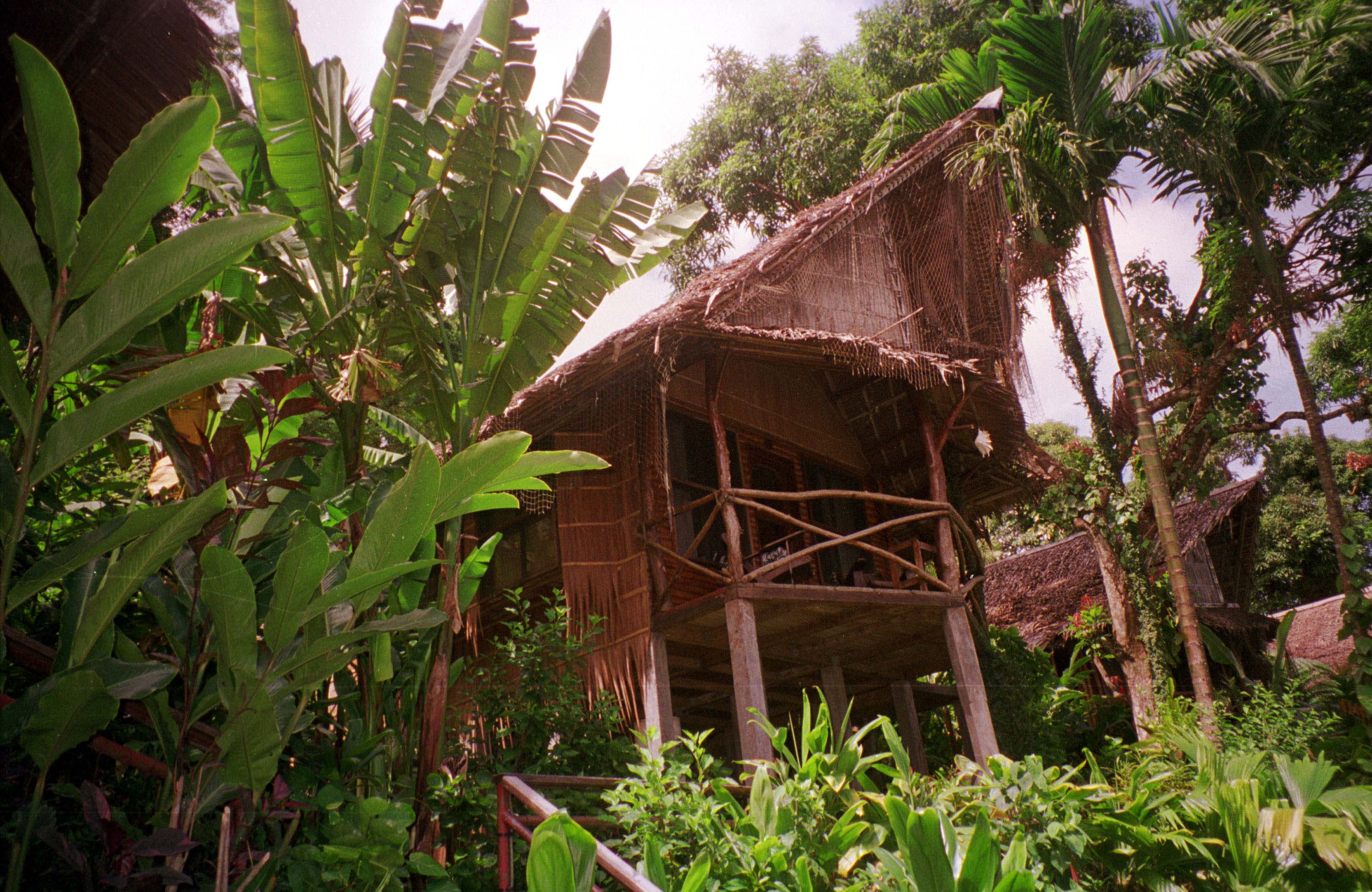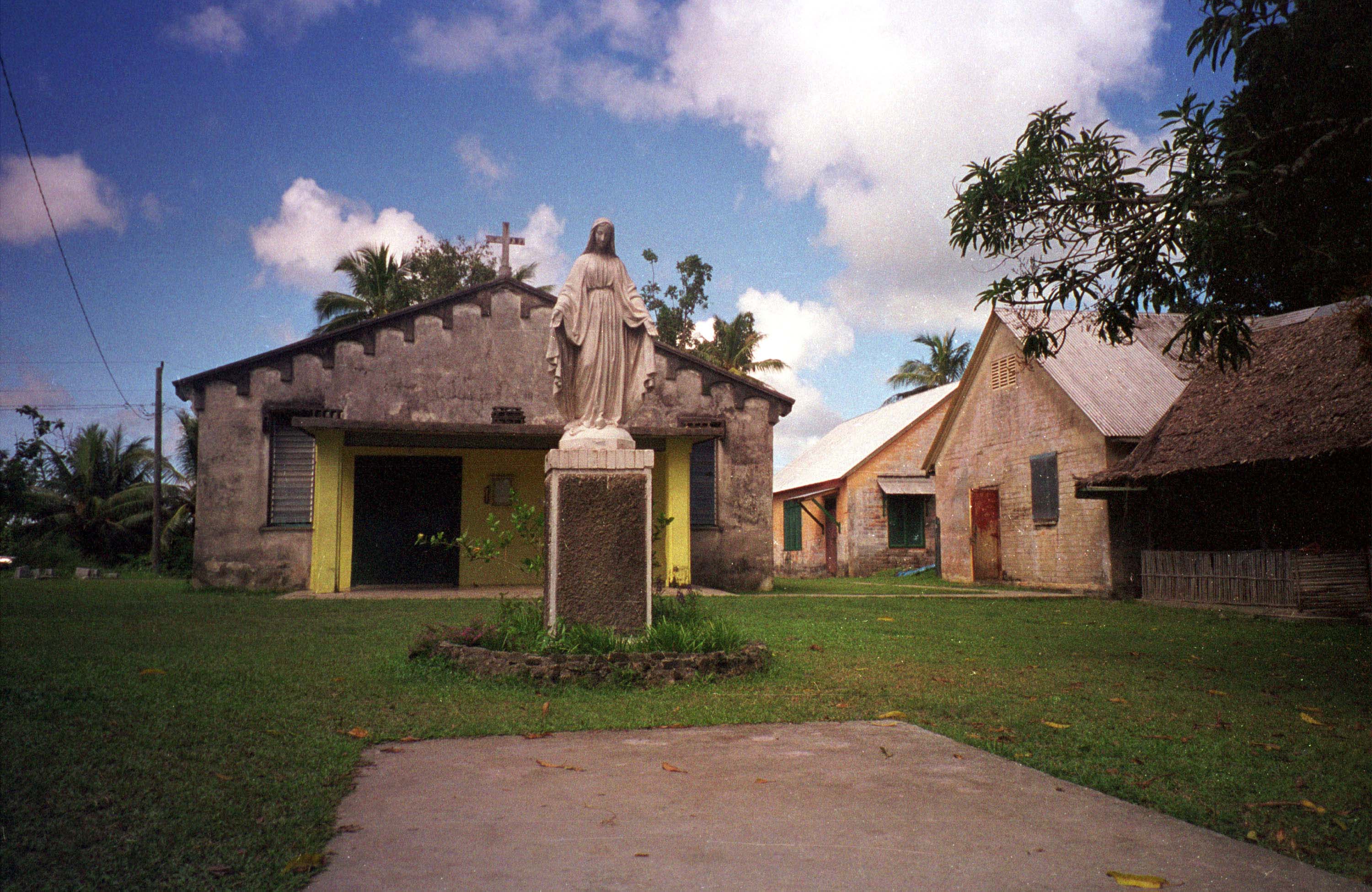
Articles
Bad Moon Rising: The View of the Towers from Beyond the Global Village
by Gil Griffin
You Are There or George's Hair (Shakespeare & Co., Paris)
by Margo Berdeshevsky
What is 'lyric'?
Ten Mile Meadow, A Conservatory of Land and Language.
(The project has been awarded funding through NYSCA's Decentralization Program, and on February 12, The Author's Watermark, Inc. will receive a check from the Albany County Arts League at a ceremony to be held in the Assembly Parlor of the New York State Capitol.)
~ . ~ . ~
Bad Moon Rising:
The View of the Towers from Beyond the Global Village
By Gil Griffin
(All photos by the author.)
For fourteen hours, I traversed the Pacific, hopping to Hawaii, then Guam, then Palau, before finally arriving on Yap, a pebble-sized, Central Pacific island among the six hundred known as Micronesia. I came all that way for one reason: out-of-this-world scuba diving. I spent wondrous and adventurous days and nights beneath the surface, exploring exquisite coral reefs and swimming among magnificent and mysterious manta rays. On land, I experienced one of the few places left on Earth that is free of modernization.

Left largely undisturbed by Western ways, many of Yap's 12,000 indigenous people live according to the traditions of their ancient culture. Yap was never colonized, though European traders did modest business with the islanders until World War II, when the Japanese invaded and occupied the islands. The United States drove the Japanese out in 1947 and governed Micronesia until 1986. A deal between the U.S. and the United Nations created the Federated States of Micronesia, with Yap and its neighbors, Palau, Kosrae, Chuuk and Pohnpei, as members. Only Palau has established itself as an independent republic; the other islands remain members of the FSM, for whose defense the U.S. is responsible.

Many Yapese wear only their flaxen loincloths or skirts in public. Far from American urban jungles, stone paths here, built long ago by the island's women, lead into rustic rain forest villages, well concealed amid towering palms and leafy taro patches. Villagers practice subsistence farming and fishing and still "trade" among themselves with immovable, giant limestone doughnut-like discs called "stone money."
In this idyllic oasis across the date line from modernity a seismic ripple crashed against my bamboo door, in the false form of a knock. September 12, 2001 had just begun. "It's your fiancée," called the Yapese-accented voice outside my triangular hut. "She says it's an emergency."

Barefoot and shirtless, I stumbled out and down a maze of stairs, fearing the worst. Back in San Diego, it was early Tuesday morning, September 11. Thank God, Arlene was O.K. But why was she asking for my father's phone number in New York? She said the World Trade Center had been bombed. I half-discounted the news. I was so desensitized, jaded, or so buzzed from the beer I had drunk an hour earlier at a barbecue, I asked little more than how many were dead, even then really only concerned that neither of my parents, who live near the towers, nor her relatives in Queens had been anywhere close.
As far as current events go, Yap may as well be in another galaxy. There is no live television there, no regular radio newscasts, and the only newspaper is flown in from Guam days after publication. Most of the outside world has either never heard of Yap, or hardly gives a damn about it or its island neighbors. On Yap, time is elastic. There, humid days and balmy nights stretch endlessly. I was scheduled to fly to Palau that evening, connecting to Hawaii the next day, and from there back to San Diego.
Six hours later, when Arlene called back, I learned I was staying put. And no one knew for how long. Our connection was clear. I heard her distinctly as she recounted the facts, but my mind balked. Recognition was slow, physical; it burned like a stomach ache until I was doubled over in pain: Four hijacked planes converted into suicide bombs. Both of the twin towers destroyed. The Pentagon badly damaged. Thousands dead. All air traffic grounded. Our borders closed. Far from my loved ones, I was marooned.

In a land unmarked by time, uncorrupted by modernity, I was now starving for its everyday conveniences and for instantaneous connectedness with the rest of the world which I had been only too glad to leave behind, if only temporarily. I ran a quarter-mile up a hilltop to a computer lab at the island's department of education. The surreal images I saw on CNN.com floored me: the second plane speeding headlong toward the South Tower; New Yorkers of all colors and ages covered in ash and soot, grieving and crying. A toxic anger raced through my blood, mixing with shock and despair.
I have never been a rabid flag-waver. Nor have I been anti-American. But, as an African American, I have walked the emotional tightrope, along with millions of my brothers and sisters, trying to balance cultural affirmation and assimilation; caught between raising the symbolic Black Power fist, as the 1968 Olympians did, and faithfully "singing America," as we have since the Revolutionary War, as our beloved poet laureate Langston Hughes wrote about extensively. While Africa is our mother continent, America is our mother country, and we have long had an abusive relationship with her. We have acted out when we saw her treating her other children with more love, compassion, and care. Deep down, we long for her to embrace, accept, respect, and value us.
We find it sometimes impossible to live with her. I have taken America to task for her misdeeds at home and abroad, questioned her commitment to "liberty and justice for all." As a journalist, I have challenged her hypocrisy, railed against foreign policy I considered misguided. During this trip, I have watched my white countrymen be condescending and callous toward the local, brown-skinned people, and felt embarrassed to be American. I have beaten myself up when I have caught myself behaving like an "ugly American."
The images of Americans on the computer screen—Black, white, Asian (Arlene is Filipina American), Hispanic, Native; Christian, Jewish, Muslim, Buddhist; straight, gay; men, women—were a testament to our diversity. All of us, individually and collectively, had been attacked. Never in my life have I felt more American. I wanted people on the island to know I was American. I wanted them to know that we would survive, that, just as "The Star Spangled Banner" proudly proclaims, "our flag was still there." My anger grew. I wanted the perpetrators to pay. But as I read the reports of passengers on the doomed flights making cellular phone calls to their loved ones, my anger quickly turned to tears. I was overwhelmed.
Across the road from the computer lab, I found sanctuary at St. Mary's Catholic Church. In the rectory, a visible embodiment of Western influence, I found a friendly, 66-year-old, white, brown-haired, Maryknoll Sister, Joanne McMahon. Originally from Duluth, Minnesota, she had been on Yap as a missionary since 1966. Instead of a habit, Sister Joanne wore a white NASCAR T-shirt. I had studied African, Asian, and Latin American history, and so have never been a big fan of missionaries or of their work. But Sister Joanne did not fit the stereotypic image I had of missionaries as arrogant, Bible-thumping racists. Her kind smile was exactly what I needed.

I am also not a Christian, nor a member of any other organized religion—though I attended a Quaker school throughout my youth and have long admired their commitment to the abolition of slavery. I had always thought political leaders were insincere when they asked citizens to pray after tragic events, when they said victims were "in our prayers." But, now, I wanted to pray with Sister Joanne. Faced with a wrong which I, as only one person, was helpless to right, I wanted to be connected. Sister Joanne sensed my vulnerability. I told her I too was American. By then, her radio was carrying a satellite news feed from the CBS affiliate in Guam. She turned it off.
We sat facing each other, holding hands: I, a dreadlocked, young Black man, and she, a middle-aged white woman. In that room, in that tragic moment, we were unified. We each asked whatever higher authority we believed in to comfort those affected. We sought answers: Why did this tragedy happen? How could it have happened?
As we sat together, thousands of miles from Ground Zero, light years from modernity, we asked the most crucial question of all: How, in God's name, could human beings act so hatefully toward their fellow men and women?
(Gil Griffin works as a newspaper journalist in San Diego. This is his first contribution to the magazine.)
~ . ~You are there or George's Hair
(Shakespeare & Co., Paris)
by Margo Berdeshevsky
Maybe it was Alistair Cook or Murrow (Edward R.) when I was eleven, and that cigarette-basso-voiced news commentator would come on the TV air Sunday nights at 6 or 7 and say, still-photos of history flashing…
It is late January 2002, …organ grinder's music up to crescendo …YOU ARE THERE…
Cut to:
Shakespeare & Co's tumble of books and poetical metaphor that lives on the site of an ancient French monastery, on the river, across from Notre Dame Cathedral (5 ème, Métro Maubert).
I'm doing a jammed to the 17th century rafters, large and pleasurable poetry reading, upstairs, for winter. [In summer, readers perform on the sidewalk out front.] The poster reads, "the renowned Monday Night Readings Return with New Vigor," and there am I, accompanied by a 39° F wine to share called "Epreuve d'Artiste" and a sunset-brilliant string-bag of mid-winter clémentines. I've quoted Omar Khayyam: a jug of… "and paradise, now." I've quoted Fyodor Dostoyevsky: "All the utopias will come to pass, only when we grow wings and all people are converted to angels…"
It's going well.
At one point, I do this little speech where I thank Shakespeare & Co's aged and infamous bookshop owner, George Whitman, for being the frère lampier, as he had me type in his "will" some years and seasons back—my privilege—and so, as preamble to my next poem, I hand him a lit candle, saying I wish to pass on back to him some of the light he's given to several generations of writers.
He looks at me like a truly mad King Lear, takes my candle, lifts it up behind his tufts-askew white head and, in one dotty, delicate sweep, sets his own hair on fire. Then, with a laugh, he turns his 84-year-old back and exits stage left!
My Yugoslavian journalist friend Ljubomir—on the landing making silhouette photo-shots of me through the doorway—watches George scurry into his room across the hall, then back out, carrying a plate of steamed broccoli and perch there in the stairwell listening to the whole rest of the reading, broccoli on knee, singed-hair redolence combining with the perfume of green food, yours truly, blonde, in the next room, heavy metal door ajar, reciting my "Whom Beggars Call," et al.
Still there…
From the audience, an old poet seated on a side bench between the floor-to-ceiling bookshelves, calls out, asks me to please take a moment's break after one of the poems, so he can catch his breath. As the reading ends, the same old poet raises his hand—eager kid in a crowd—and asks if he might please read me a little something he has scribbled in my honor. (Never saw the guy before.)
It turns out he's written a tribute to the reading, saying in essence that I will probably never get published because I'm too "huge" and too "emotional" and too "good," so he proposes that my words be carved in stone somewhere, perhaps on a wall of the facing Notre Dame.
I cringe with quasi-humble shyness and kiss his cheek. (That I have succeeded is really scary sometimes.) Just then, George swoops into the room—from his listening perch in the stairwell—and snaps up the note-pages out of the old guy's hand like a seagull after a fish and makes off with them, to general applause and laughter.
Goes without saying: an event! And you were there!
[Until recently, George Whitman never answered the phone—or had none. It is therefore remarkable that Shakespeare & Co. has a web site. And George has written the book only he could: The Rag and Bone Shop of the Heart. Eds.](Widely published, Margo Berdeshevsky is a contributing editor to the magazine. Masthead. She divides the year between Paris and Maui.)
~ . ~
What is 'lyric'?
Typically defined as "a single speaker relating his experience of the world," the term evokes for many Wordsworthian pastorals, Byron's Childe Harold or Frost's elemental Yankee loner. Yet John Berryman, the master of "shipwrecked syntax," navigated the lyric's powerful currents as the "voice of the other." In Ragan's Hunger Wall, Kinnell's Book of Nightmares, it is the spillway of brute force, the collective undertow of horror.
Through the intimate bonding of sound and meaning, the lyric poem draws the deepest emotional, the keenest sensual response, its enunciated breath the music that "joins the liberties of sleep with the intensity of extreme wakefulness," (Valéry) the rhythm and sonority that "respond to man's immortal need for symmetry and surprise." (Baudelaire)
Lyric is mesmerizing in any language, however rudimentary one's linguistic, thus, mental apprehension. Once emotionally allied with the piece, the listener imputes his own meaning, as here to a stanza in Suvicnai ("Shoo-veets-NYE"):
Voc mani sloka, sloka tedü,
nu sonic lennia kim debai.
Edevi kum battoy sis bajani,
nev husko fai ranne dari mijü.
O nev nev ranne faisi dari mijai.
The lyric poem's first stirrings are rarely verbal; it arrives by emotional sensation, by the internal color, texture, smell of a mood, by an image, pitch, cadence, hum, by the savor of a long vowel. "The poet is occupied with the frontiers of consciousness where words fail, but meanings still exist." (Eliot) This is the zone we inhabit when we enter into dialogue with the poem to transliterate our non-verbal exchange onto the page. Poet accounts solely to poem as the final arbiter of its completion; poem scrutinizes and challenges poet.
Rilke's Apollo is headless, limbless, yet every contour of muscle and bone radiates a gaze and a smile.
Denn da ist keine Stelle,
die dich nicht sieht.
Du mußt dein Leben ändern.
For there is no part of him
that does not see you.
You must change your life.
Only by surrender to the dialogue can we create anything true, anything of lasting value. By recovering the lyric, we acknowledge needs and reaffirm values that alter, enlarge, transcend ourselves.
In eleven sessions in New York, Paris and Prague, Lyric Recovery™ sought to extend the lyric to full potential, presenting, engendering and visibly rewarding work marked by reach, craft, content and musicality. The twelfth culminated with the sold-out 2000 festival session at Carnegie Hall. Wednesday, March 27, at 7:30 p.m. marks the return. To repeat the effort is quite nearly as important as to have begun it.
Huddled since mid-century as "global village" around a dominant source of imagery, sound, even meaning, we must make uncommon use of language to ferry us beyond its perimeter to the essential, shared harmonics.
(Lyric Recovery Festival™ at Carnegie Hall is a p h i l o p h o n e m a ™ presentation. Submission guidelines and seating details appear on the 2002 LyR web site.)
~ . ~ . ~